#anne in ireland
Explore tagged Tumblr posts
Text


Princess Anne at the Department for Business and Trade’s Northern Ireland Business Summit Reception held at Hillsborough Castle, Northern Ireland on 13th September 2023.
77 notes
·
View notes
Text
Ireland while the whole Monarchy celebrates the coronation of King Charles III
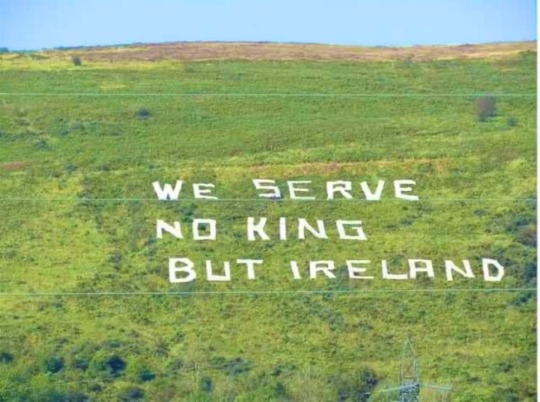
#british royal family#royal family#british monarchy#uk politics#royals#kate middleton#prince william#King Charles#coronation#prince louis#princess charlotte#imperialism#ireland#Camilla#wales#princess anne#prince harry#meghan markle#prince george#monarchy#princess of wales#prince of wales#king charles iii#queen consort#england#prince andrew#charles iii
2K notes
·
View notes
Text
just got out of wicked. had an incredibly hard time enjoying myself bc every time they were like "oh no they're doing x to the animals" my brain was like "yeah something very similar happened to a jew not too long ago"
#the goat professor's blackboard got vandalized and i'm just like. i know people whose synagogues that was done to. anne frank's memorial too#“a vicar no longer permitted to speak to his flock” ya and a rabbi in ireland was arrested for performing a bris#nobody listening to the animals speaking out to the point that they might as well not be speaking english. the animals having to make the#decision between standing and fighting or fleeing. scholars being barred from teaching in institutions and animals' history being literally#painted over and appropriated by another culture who then also wrote the textbooks to say that it was their story all along#none of this is fictional to me idk#AT RHE BEGINNING THEY BURN A FUCKING EFFIGY OF ELPHABA LIKE COME ON GUYS#anyway. it was a well msde movie i'm just not gonna be able to watch it again. not for a while at least#jumblr#wicked#antisemitism
98 notes
·
View notes
Text

Sunrise this morning over the Baily Lighthouse on the Howth Peninsula, Ireland.
Click on photo
📸 by @Ann.Bruen
#Photography by Ann Bruen#@Ann.Bruen#Sunrise#Bailey Lighthouse#Dublin#Howth Peninsula#Howth#Discover Ireland
36 notes
·
View notes
Text

Proud to be Irish!!! SO HAPPY FOR THESE GIRLS 🥹🍀🇮🇪
#tumblr fyp#fypツ#woso community#woso#woso appreciation#ireland#ireland wnt#republic of ireland#katie mccabe#denise o’sullivan#Julie-ann Russell#Eileen Gleason#proud to be Irish#Megan Connolly#euros 2025#qualifying campaign#fypage
45 notes
·
View notes
Text



Becoming Jane (2007, Julian Jarrold)
28/09/2024
#becoming jane#film#2007#julian jarrold#biographical film#jane austen#anne hathaway#Thomas Langlois Lefroy#james mcavoy#18th century#pastor#protestantism#lawyer#the marriage of figaro#english language#united kingdom#republic of ireland#Category 2007 films#aspect ratio#Film genre#drama#film director#Scriptment#screenplay#Kevin Hood#sarah williams#film producer#Robert Bernstein#Graham Broadbent
16 notes
·
View notes
Text

Connemara Cottage, Ireland :: Photo: © Ann Cahill
* * * * *
Each one of us is alone in the world. It takes great courage to meet the full force of your aloneness. Most of the activity in society is subconsciously designed to quell the voice crying in the wilderness within you. The mystic Thomas a Kempis said that when you go out into the world, you return having lost some of yourself. Until you learn to inhabit your aloneness, the lonely distraction and noise of society will seduce you into false belonging, with which you will only become empty and weary. When you face your aloneness, something begins to happen. Gradually, the sense of bleakness changes into a sense of true belonging. This is a slow and open-ended transition but it is utterly vital in order to come into rhythm with your own individuality. In a sense this is the endless task of finding your true home within your life. It is not narcissistic, for as soon as you rest in the house of your own heart, doors and windows begin to open outwards to the world. No longer on the run from your aloneness, your connections with others become real and creative. You no longer need to covertly scrape affirmation from others or from projects outside yourself. This is slow work; it takes years to bring your mind home.
-JOHN O'DONOHUE
Excerpt from the book, Eternal Echoes
#John O'Donohue#Eternal Echoes#Ann Cahill#Connemara Cottage#ireland#quotes#theology#spiritual direction
14 notes
·
View notes
Text
I've still been reading Heidi Anne Heiner's Cinderella Tales From Around the World. I've just finished reading all the variants from Ireland, Scotland, and England.
Here are the patterns:
*In Gaelic variants (e.g. two Irish versions and one Scottish), the heroine and her two sisters typically have names that describe their appearance or demeanor, with the sisters' names implying that one is blonde and the other brunette. For example, Fair, Brown, and Trembling, or Fair-Hair, Brown-Hair, and Mangy-Hair, or the Fair Maid, the Swarthy Maid, and the Snow-White Maid.
*As usual, it varies whether the heroine is abused by a stepmother and stepsister(s) or by her own mother (or both parents) and sister(s), or just by her sisters alone, and whether there are two (step)sisters or just one. In the three Gaelic versions with hair-themed naming, the girls are biological sisters, though in The Snow-White Maid, the Fair Maid, the Swarthy Maid, and Bald Pate Their Mother, they're half-sisters and Balt Pate is the Snow-White Maid's stepmother.
*It seems far more common in these versions for the heroine and her (step)sister(s) to be princesses. This has sometimes turned up in other countries' variants so far, most notably in Finette Cendron, but so far the British Isles seem to have the biggest number of Cinderellas who are princesses by birth.
**In the Irish Fair, Brown, and Trembling, not only is Trembling seen by her own prince at church, but the fame of her beauty spreads throughout the world, and all the princes of Ireland come to see her, as do princes from other countries like Spain and Greece. They all want to marry her and agree to duel for her hand after the slipper fits her, but after four days of fighting they all concede to the prince who first fell in love with her.
*The heroine's magical helper is either an old woman or an animal in these variants, and if it's an animal, it's almost always either a black sheep or a red calf. The beginning of one Irish version explains that black ewes were considered good luck.
**In almost all the versions with an animal, as in the Grimms' One-Eye, Two-Eyes, Three-Eyes or French tale of The Blue Bull, the (step)mother sends the heroine out to pasture each day with barely anything to eat, hoping to slowly starve her, but the animal magically provides her with good food.
**As usual, the animal companion tends to be killed by the (step)mother, but unusually, it doesn't stay dead in these variants. Instead, after the heroine gathers up the bones, the animal comes back to life, limping because the heroine lost one shank bone, but otherwise none the worse for wear. There are also some variants where the animal doesn't die at all. In one Scottish version, the heroine is ordered to behead the calf herself, but instead she kills her sister (!), takes the calf and runs away.
*In both Irish and Scottish versions, the special event the heroine attends is always church, not a festival or party. Several versions take place at Christmas and have her attend the special Yuletide Masses.
*The old woman or animal typically not only provides the girl with finery and a horse to ride, but cooks the family's dinner for her by the time she gets back. In one Scottish version, Ashpitel, the black lamb doesn't even give her finery – she just dresses herself in her own fine clothes that she rarely gets to wear, while the magic the lamb provides is just to cook the dinner for her.
*In the Gaelic versions, the prince rides after the heroine the third time she rides away from church, and grabs her by the foot, but only succeeds in pulling off her shoe. Whereas in the Scots versions, she just loses her shoe by accident.
*In Scotland, the story (and the heroine) is most often called Rashin Coatie (a.k.a. Rashie Coat, or Rushen Coatie), because the heroine wears a coat made of rushes, or "rashes" in Scots dialect.
** It varies whether Rashin Coatie is simply forced to serve her (step)mother and (step)sister(s) at home, or whether she runs away, to escape either from a cruel family or from an arranged marriage, and becomes a servant at the prince's castle, a la Donkeyskin.
*Both Irish and Scottish versions tend to include the motif of foot-cutting to make the slipper fit, just like the German versions do. A bird alerts the prince, typically in a rhyme which says that "nipped foot and clipped foot" is riding with him while "pretty foot and bonny foot" is elsewhere. But it's not always the (step)sisters who do it. In the Donkeyskin-like versions of Rashin Coatie, where the heroine runs away and becomes a servant at the prince's castle, the rival who tries to trick the prince is a henwife's daughter instead.
**Henwives are ubiquitous in these variants. But in the Gaelic versions (both Irish and Scottish), the henwife is benevolent, often serving as the heroine's magical helper, while in the Scots-dialect Rashin Coatie variants, she's a secondary villain, with the above-mentioned daughter who aspires to marry the prince.
*The Gaelic versions usually continue the story after the heroine's marriage, and have her eldest sister (the blonde one) throw her into the sea or a lake, then take her place. But either the princess's bed stays afloat so she doesn't drown, or she's captured by a whale or a water monster that keeps her a prisoner in the deep, yet briefly lets her onto the shore now and then. A cowherd sees her and alerts her royal husband, who rescues her, slaying the whale or monster if there is one, and the sister is executed.
*There doesn't seem to be a strong tradition of localized, oral Cinderella stories in England the way there is in Ireland and Scotland. But this book does include an English literary version: The Cinder-Maid by Joseph Jacobs, the folklorist who gave us the best-known versions of Jack and the Beanstalk and The Three Little Pigs.
**As usual in Jacobs' retellings of folktales, he borrows motifs from various different oral versions in an attempt to write down the "definitive" version of the tale. So The Cinder-Maid is basically the Grimms' Aschenputtel, with the three-day royal festival, the heroine getting her finery from a hazel tree on her mother's grave, the prince smearing the palace steps with tar to catch her golden slipper, and the stepsisters cutting off parts of their feet. But Jacobs also includes the motifs of "finery from a nutshell" and "hollow tree opens to reveal gifts" from other versions – each dress and pair of shoes comes from inside a hazelnut from the tree, and then the trunk opens to produce a coach and horses. And the bird in the tree instructs Cinder-Maid to leave by midnight, as in Perrault. (The midnight deadline is a rare motif in international Cindrellas, despite the fame Perrault gave it; in most versions she just leaves early to ensure that she gets home before her family does.)
**In his footnotes to The Cinder-Maid, Jacobs notes the existence of Rhodopis, but he argues that the entire Cinderella story (the persecuted heroine, magical help to attend an event, etc.) most likely originated in Germany, because it was a German betrothal tradition for a man to put a shoe on his fiancée's foot. He makes no mention of Ye Xian, or the more common belief that the story was born in China from the Chinese view of tiny feet as the height of feminine beauty. This reminds me of a hypothesis I once read that maybe Ye Xian isn't really as ancient a tale as it's believed to be – that maybe the story originated in Germany, then spread to China by way of the Silk Road, and that the name "Ye Xian" may derive from the similar-sounding "aschen," the German word for "ashes" that starts every German form of Cinderella's name (Aschenputtel, Aschenbrödel, etc.). Personally, though, I don't see why the reverse can't be true: couldn't the story just as easily have travelled from China to Germany? Maybe the heroine's association with ashes started when Germans heard the name "Ye Xian" and thought it sounded similar to "aschen"!
But I'm getting ahead of myself talking about China. The next several Cinderellas I'll be reading come from Scandinavia.
@adarkrainbow, @ariel-seagull-wings, @themousefromfantasyland
#cinderella#fairy tale#variations#cinderella tales from around the world#heidi anne heiner#ireland#scotland#england#tw: violence
37 notes
·
View notes
Text

BEANNACHT
On the day when
The weight deadens
On your shoulders
And you stumble,
May the clay dance
To balance you.
And when your eyes
Freeze behind
The gray window
And the ghost of loss
Gets into you,
May a flock of colors,
Indigo, red, green
And azure blue,
Come to awaken in you
A meadow of delight.
When the canvas frays
In the curragh of thought
And a stain of ocean
Blackens beneath you,
May there come across the waters
A path of yellow moonlight
To bring you safely home.
May the nourishment of the earth be yours,
May the clarity of light be yours,
May the fluency of the ocean be yours,
May the protection of the ancestors be yours.
And so may a slow
Wind work these words
Of love around you,
An invisible cloak
To mind your life.
~ JOHN O'DONOHUE
From his books, To Bless the Space Between Us (US) / Benedictus (Europe)
Ordering Info: https://johnodonohue.com/store
Cliffs of Moher - 2024
County Clare, Ireland
Photo: © Ann Cahill
#John O'Donohue#Beannacht#heart and soul#life#love#invisible cloak#mind your life#Cliffs of Moher#Country Clare#Ireland#Photo © Ann Cahill#To Bless the Space Between Us#Benedictus#Blessing
51 notes
·
View notes
Text

Queen Anne Stuart. Unknown artist.
#house of stuart#uk#kingdom of scotland#kingdom of england#long live the queen#anne stuart#queen anne#house of stewart#kingdom of ireland#god save the queen#scottish dna#royalty
8 notes
·
View notes
Photo
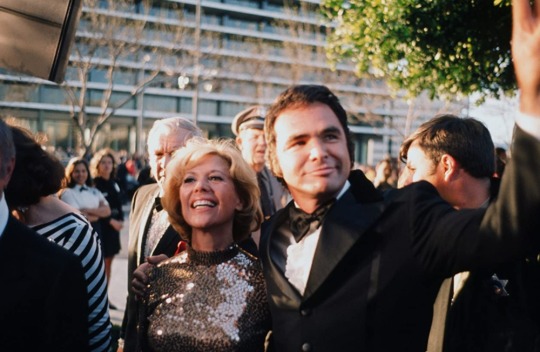






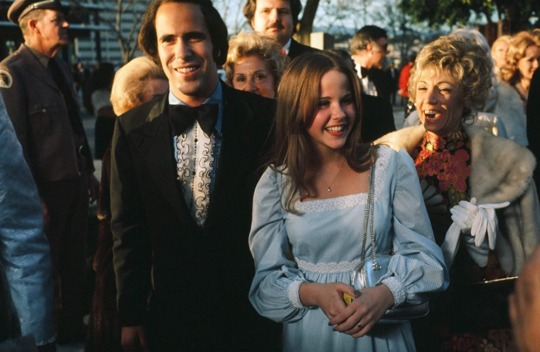


Dinah Shore, Burt Reynolds, Al Pacino, Marvin Hamlisch, Ann-Margret, Roger Smith, Paul Newman, Joanne Woodward, Susan George, Jack Jones, Felicia Farr, Jack Lemmon, Jill Ireland, Charles Bronson, Linda Blair, Paul McCartney, Linda McCartney, Raquel Welch & Damon Welch at the 46th Academy Awards at the Dorothy Chandler Pavilion in Los Angeles, California on April 2nd 1974.
#dinah shore#burt reynolds#al pacino#marvin hamlisch#ann margret#roger smith#paul newman#joanne woodward#susan george#jack jones#felicia farr#jack lemmon#jill ireland#charles bronson#linda blair#paul mccartney#linda mccartney#raquel welch#damon welch#academy awards#the oscars#1974#style#fashion#couples#1970s
181 notes
·
View notes
Text







Princess Anne unveiling a new British Legion memorial bench in Market Square, Dromore, Northern Ireland on 13th September 2023.
📸 Dromore Chamber of Commerce on Facebook
51 notes
·
View notes
Text



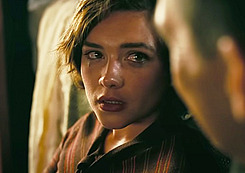





Most Underrated Supporting Actress
Julianne Moore in May December
Rosamund Pike in Saltburn
Florence Pugh in Oppenheimer
Jurnee Smollett in The Burial
Anne Hathaway in Eileen
Allison Oliver in Saltburn
Penélope Cruz in Ferrari
Marin Ireland in Eileen
#saltburn#rosamund pike#julianne moore#anne hathaway#florence pugh#allison oliver#penelope cruz#marin ireland#may december#the burial#jurnee smollett#ferrari#eileen#movies#golden globes#oscars#snub#underrated
29 notes
·
View notes
Text
Look at us doing things! The balls of it.

#fuck france all my homies hate france#julie-ann russell#ireland#ireland women#irewnt#irlwnt#soccer#women's soccer#woso#women's sports#wospo#football#women's football
9 notes
·
View notes
Text

This December full moon was definitely playing hard to get over the last few days so was delighted to capture it on the slopes of Slieve Foye from Carlingford this morning. 12/16/24
Click on photo
📸 by @Ann.Bruen
#Ann Bruen#@Ann.Bruen#December Full Moon#Slieve Foye#Carlingford#Ireland#12/16/24#Moon Lovers#Nature#Moon Photography#Travel#Visit Ireland
7 notes
·
View notes
Text
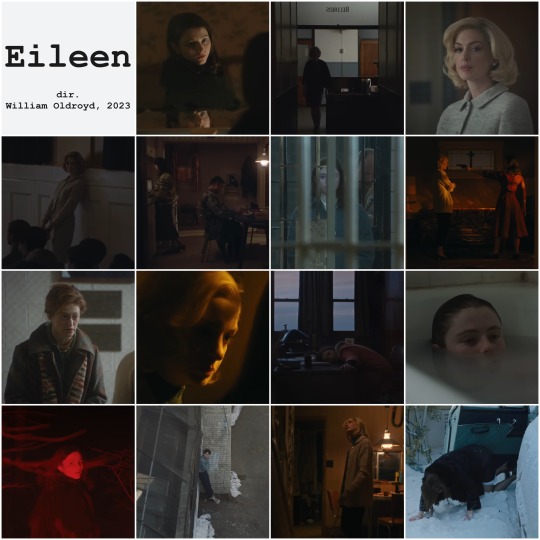
Eileen
directed by William Oldroyd, 2023
#Eileen#William Oldroyd#movie mosaics#Thomasin McKenzie#Anne Hathaway#Shea Whigham#Marin Ireland#Sam Nivola
22 notes
·
View notes